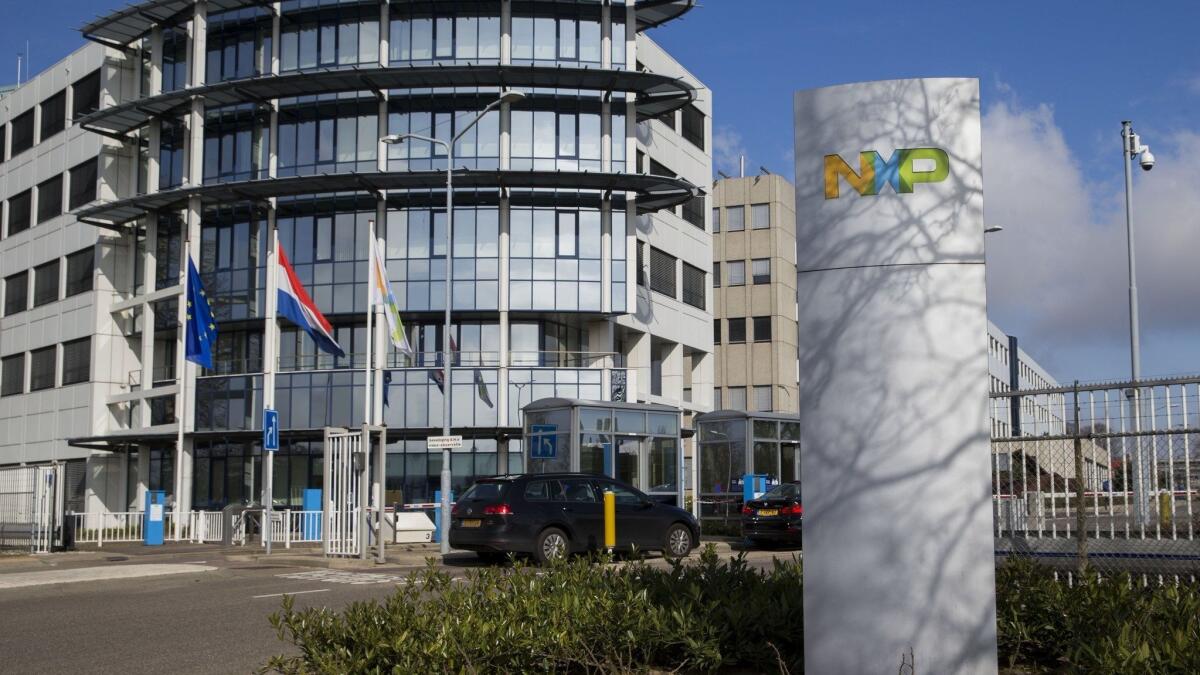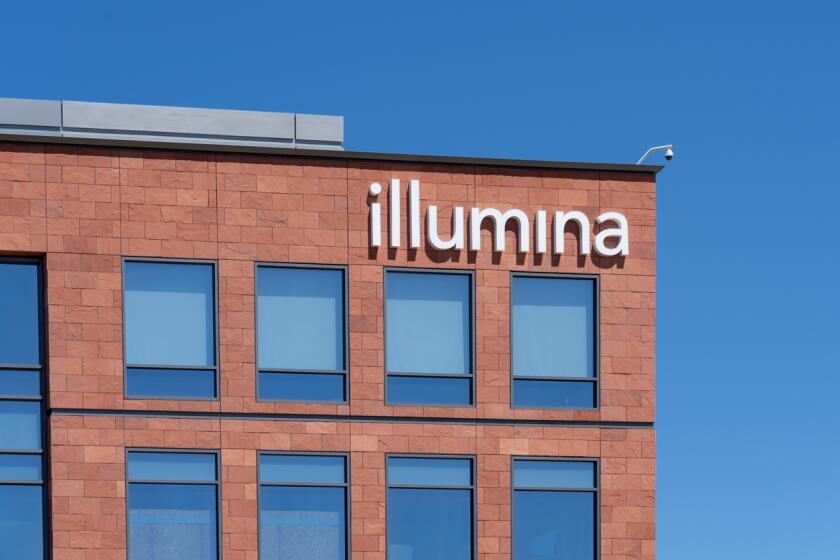Qualcomm, NXP shares rise on renewed hope that China will green light merger

Just last week, Qualcomm’s long-delayed $43 billion acquisition of Dutch automotive chip maker NXP Semiconductor – a key piece of its efforts to diversify beyond smartphones -- appeared to be in trouble.
But on Monday, a string of news – including a tweet from President Trump – gave investors hope that the deal might survive after all.
The San Diego cellular technology giant’s shares ticked up nearly 3 percent Monday as investors bet that Trump’s tweet and subsequent moves by China’s antitrust regulator could telegraph a thawing of trade tensions between the two countries.
NXP‘s stock also surged -- gaining nearly 12 percent on the day. Its shares have fallen sharply in recent weeks as the brewing trade war made it unlikely that Chinese officials would give the go-ahead to the Qualcomm deal.
Over the weekend, President Trump tweeted that he was ordering the U.S. Commerce Department to undo a ban on U.S. companies supplying Chinese smartphone maker ZTE, which threatened the Chinese phone maker’s existence.
“President Xi of China, and I, are working together to give massive Chinese phone company, ZTE, a way to get back into business,” said President Trump on Twitter. “Too many jobs in China lost. Commerce Department has been instructed to get it done.”
Then on Monday, China’s Ministry of Commerce re-started its antitrust review of the Qualcomm/NXP merger, according to Bloomberg News.
The agency had halted its examination and asked Qualcomm to re-submit its application earlier this month as trade tensions rose.
Stacy Rasgon, an analyst with Bernstein Research, was hesitant to read too much into the “policy-by-tweet” that extended a life-line to ZTE, as well as China’s move to resume its Qualcomm/NXP review.
“Nevertheless, assigning a higher deal probability seems warranted at this point,” said Rasgon in a research report.
Qualcomm declined to comment. Bringing NXP into the fold, however, is a key cog in its strategy to reduce its reliance on a stagnant smartphone market.
NXP supplies keyless entry, automotive sensors, credit card/mobile payment and other technologies used in a variety of products. It is forecast to add $1.50 per share to Qualcomm’s earnings in 2019.
Qualcomm is counting on the NXP contribution to help it hit the $5.25 per share adjusted earnings target that it promised investors when it was fighting off the hostile takeover bid from Broadcom earlier this year.
Top Chinese economic advisers are expected to be in Washington, D.C., this week for talks about how to avoid a trade war.
ZTE relies on Qualcomm, Intel, Google and other U.S. tech firms to supply it with hardware and software to make phones and other electronics. The Commerce Department recently banned ZTE from tapping U.S. suppliers for its products.
The move came after ZTE failed to live up to terms of a previous settlement with regulators for selling gear containing U.S. technology to North Korea and Iran in violation of trade sanctions.
ZTE is China’s second largest telecommunications company with 75,000 workers. It suspended all major operations last week in network gear, phones and business services following the U.S. ban.
The Qualcomm/NXP merger has received approval from eight countries worldwide, with China the sole hold-out. Regulators have expressed concerns that the deal could hurt domestic suppliers and stated Qualcomm proposed remedies fall short of what’s necessary.
Qualcomm and NXP have set July 25 as the deadline to complete the deal, at which time Qualcomm would owe a $2 billion break up fee.
Qualcomm’s shares gained $1.51 to close trading at $56.74 on Monday. NXP’s stock rose $11.73 to $110.74. Both trade on the Nasdaq.
Business
mike.freeman@sduniontribune.com;
760-529-4973
Get U-T Business in your inbox on Mondays
Get ready for your week with the week’s top business stories from San Diego and California, in your inbox Monday mornings.
You may occasionally receive promotional content from the San Diego Union-Tribune.










